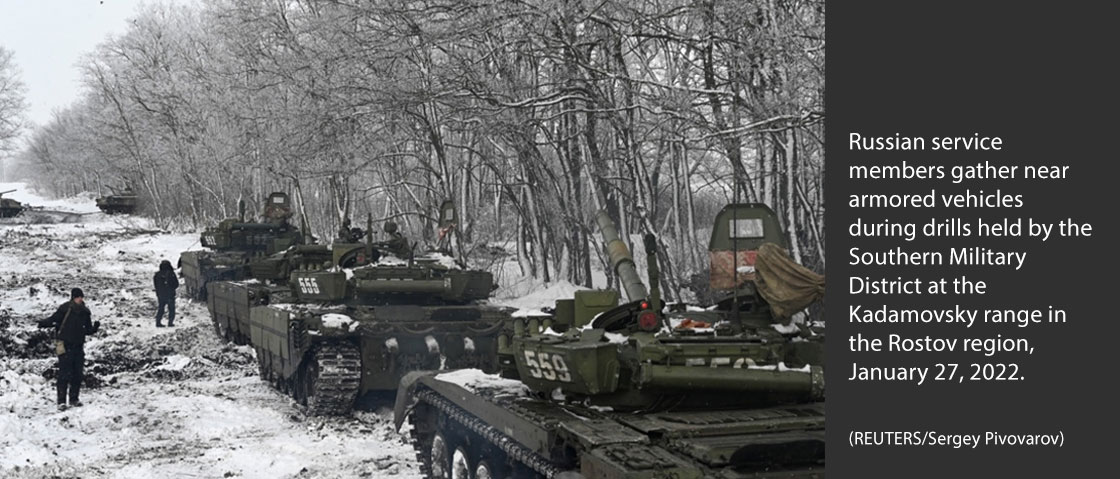Vladimir Putin | Russian president
“They say the policy of ‘open doors.’ Where did it come from? NATO has an ‘open doors’ policy? Where is it prescribed? Nowhere.”
Source: TASS, February 1, 2022
Misleading quote - this article first appeared here.
On February 1, Russian President Vladimir Putin hosted Hungary’s Prime Minister Victor Orban in the Kremlin. During a joint news conference, Putin commented on Russia’s standoff with the West over his military buildup along Ukraine’s borders.
Putin criticized the US written response to Russian security demands concerning Ukraine and NATO expansion. The US has said membership in the 30-member US-European military alliance will remain open to Ukraine, in accordance with NATO’s founding principles.
Putin claimed that, since NATO can reject countries that seek membership, there is no “open-door” policy:
“They say the policy of ‘open doors.’ Where did it come from? NATO has an ‘open doors’ policy? Where is it prescribed? Nowhere.”
That is misleading.
In fact, the open-door policy is written in NATO’s founding document – The North Atlantic Treaty – signed in Washington, DC, in 1949. Article 10 of the treaty states:
"The Parties may, by unanimous agreement, invite any other European State in a position to further the principles of this Treaty and to contribute to the security of the North Atlantic area to accede to this Treaty. Any State so invited may become a Party to the Treaty by depositing its instrument of accession with the Government of the United States of America. The Government of the United States of America will inform each of the Parties of the deposit of each such instrument of accession."
Putin’s argument seems to echoe an op-ed published by The Hill newspaper on January 27, headlined “There is no NATO open door policy.” The authors, Michael O’Hanlon, the Philip H Knight Chair in Defense and Strategy at the Brookings Institution, and Stephen Van Evera, a professor of political science with MIT’s Security Studies Program, argued that the “open-door policy” does not mean that any country has an “automatic right” to join the alliance.
“While Russia should not be allowed to veto Ukraine’s hypothetical membership in NATO, there is, in fact, no NATO open-door policy — at least not on the unconditional terms that are often implied when that concept is invoked,” they wrote.
That’s a far cry, however, from saying newcomers aren't welcome.
O’Hanlon and Van Evera argued that Article 10 is conditional: “New members can join NATO only if their membership would enhance regional security.”
They added: “It is difficult to see how adding Ukraine to NATO could enhance the region’s security. More likely, it would further antagonize Russia and increase, rather than reduce, the risks of some type of conflict.”
The authors are known for their long-term skepticism about NATO. In his 2017 book, “Beyond NATO: A New Security Architecture for Eastern Europe,” O’Hanlon pushed the idea of a new “neutrality-based” security architecture in Europe that would allow lifting sanctions from Russia in exchange for its promise to withdraw military forces from Ukraine, Georgia, and Moldova.
In his February 1 comments, Putin also repeated the thoroughly debunked claims that the U.S. has “ditched” Russia by breaking a promise to never expand NATO eastward, and that the alliance has “encircled” his country.
As Polygraph.info and others have documented, no promise was ever made to Russia not to expand NATO eastward. In addition, NATO member states share less than 80 miles of Russia’s 2,577-mile-long border.
Orban’s visit to Moscow was part of a flurry of high-level diplomatic meetings involving the US, Russian and EU officials. Russia has amassed more than 100,000 troops and heavy weaponry around Ukraine. Russia denies it plans to invade, but it annexed Ukraine’s Crimean Peninsula in 2014 and has backed a war in Ukraine’s eastern Donbas region that has killed 14,000.
Among other things, Russia demands that Ukraine be permanently banned from NATO membership, and that NATO forces withdraw from Romania and Bulgaria and return to positions in 1991 before the Soviet Union crumbled.
The United States has called these demands “non-starters.” Instead, in written responses to the Kremlin leaked and published by Spain’s El Pais newspaper on February 2, the US offered Russia negotiations on disarmament agreements and trust-building measures – “the success of which are conditioned on the start of a de-escalation of the Russian military threat to Ukraine.”
El Pais reported:
“The Russian authorities demanded a written response to their proposal to sign a deal that gave security guarantees to Moscow regarding the expansion of NATO to the east. Moscow even included a draft version of the hypothetical deal. The response was two texts: one titled “Confidential/Rel Russia” (consisting of an introduction, seven points and some brief conclusions) on the part of Washington; and another, under the heading “NATO-Russia Restricted” (with 12 sections), from the Atlantic Alliance.
“From the beginning, the document from Washington makes clear that it “continues to firmly support NATO’s Open Door Policy,” and so does not exclude the future incorporation of Ukraine or Georgia into the Alliance. And it clarifies that whatever the case this issue should be dealt with at the NATO-Russia Council (NRC). The NATO text also reinforces its open-door policy and underlines the right of all states to choose their agreements in terms of security “free from outside interference.”
Pentagon spokesman John Kirby confirmed at a press briefing that the documents published by El Pais were authentic. Meanwhile, President Joe Biden has approved sending some 3,000 American troops to eastern Europe in addition to the 8,500 that the Pentagon already put on alert for potential deployment, Kirby said.




